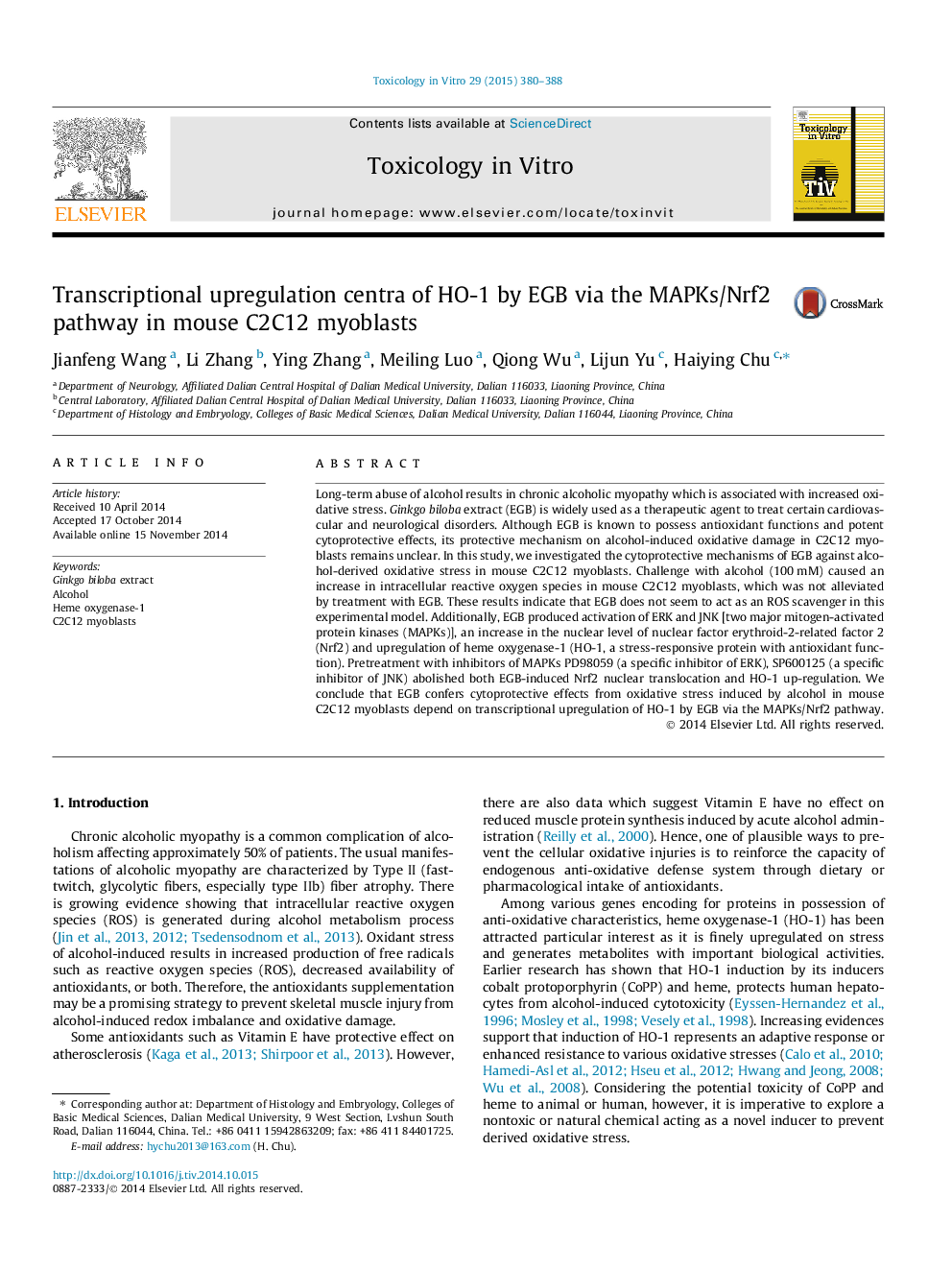| Article ID | Journal | Published Year | Pages | File Type |
|---|---|---|---|---|
| 2602461 | Toxicology in Vitro | 2015 | 9 Pages |
•We model for alcohol myopathy using mouse C2C12 myoblast cultures.•A mechanism for EGB against alcohol-derived oxidative stress is proposed.•The mechanism relies on upregulation of HO-1 by EGB via the MAPKs/Nrf2 pathway.
Long-term abuse of alcohol results in chronic alcoholic myopathy which is associated with increased oxidative stress. Ginkgo biloba extract (EGB) is widely used as a therapeutic agent to treat certain cardiovascular and neurological disorders. Although EGB is known to possess antioxidant functions and potent cytoprotective effects, its protective mechanism on alcohol-induced oxidative damage in C2C12 myoblasts remains unclear. In this study, we investigated the cytoprotective mechanisms of EGB against alcohol-derived oxidative stress in mouse C2C12 myoblasts. Challenge with alcohol (100 mM) caused an increase in intracellular reactive oxygen species in mouse C2C12 myoblasts, which was not alleviated by treatment with EGB. These results indicate that EGB does not seem to act as an ROS scavenger in this experimental model. Additionally, EGB produced activation of ERK and JNK [two major mitogen-activated protein kinases (MAPKs)], an increase in the nuclear level of nuclear factor erythroid-2-related factor 2 (Nrf2) and upregulation of heme oxygenase-1 (HO-1, a stress-responsive protein with antioxidant function). Pretreatment with inhibitors of MAPKs PD98059 (a specific inhibitor of ERK), SP600125 (a specific inhibitor of JNK) abolished both EGB-induced Nrf2 nuclear translocation and HO-1 up-regulation. We conclude that EGB confers cytoprotective effects from oxidative stress induced by alcohol in mouse C2C12 myoblasts depend on transcriptional upregulation of HO-1 by EGB via the MAPKs/Nrf2 pathway.
Graphical abstractFigure optionsDownload full-size imageDownload as PowerPoint slide
